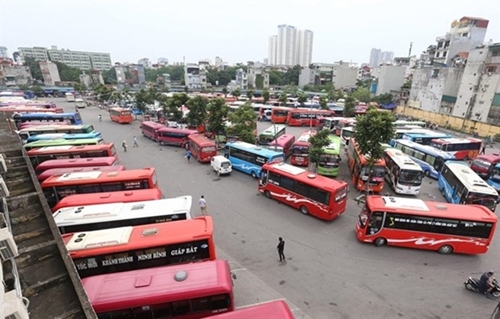February 12, 2020 | 20:13 (GMT+7)
Surveillance cameras in buses on the way
Some 170,000 buses, coaches and mini-buses will need to have two in-vehicle surveillance cameras from July next year.
All owners of the nine-seat or above transportation vehicles will have to finish the installation of the cameras by July 1, 2021, following a decree recently approved by Prime Minister Nguyen Xuan Phuc.
The move aims to stop driver behaviour that could threaten the safety of passengers and clamp down on buses carrying more passengers than they are permitted to.
Recording and storage of the images on the vehicles, including images of the drivers and doors of the vehicles, must be sent to police, traffic inspectors and licensing agencies to ensure transparent surveillance.
    |
 |
|
Vehicles at Giap Bat Bus Station in Hanoi |
Videos and images must be stored for a minimum of 24 hours for vehicles on journeys of less than 500km and 72 hours for vehicles operating on journeys of more than 500km.
It is estimated installing cameras in all 170,000 vehicles will cost 1.5 – 1.9 trillion VND (64.5-81.8 million USD).
The decree also said that cars providing passenger transportation services could have a taxi sign on the roof or stick a sign made of reflective material on the front or rear window instead of being forced to install a taxi sign on the roof as before.
For the vehicles’ taximeter, the device must be inspected and verified by a competent agency. The vehicles must also have an invoice printing device connected to the taximeter in a place passengers can easily observe.
Businesses that provide passenger transportation services via ride-hailing must also send an electronic invoice for each trip to the passenger after the trip ends and send information on the invoice to the local tax office.
Source: VNA